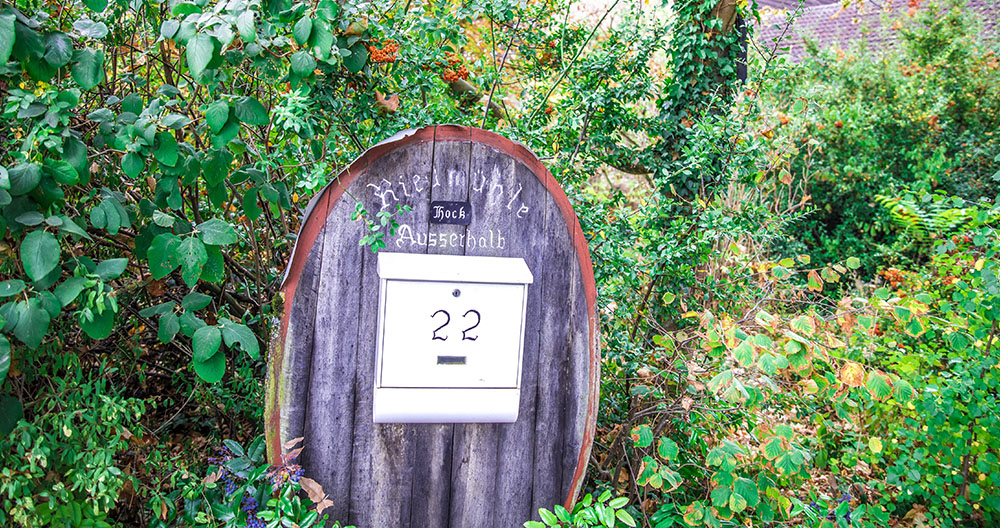
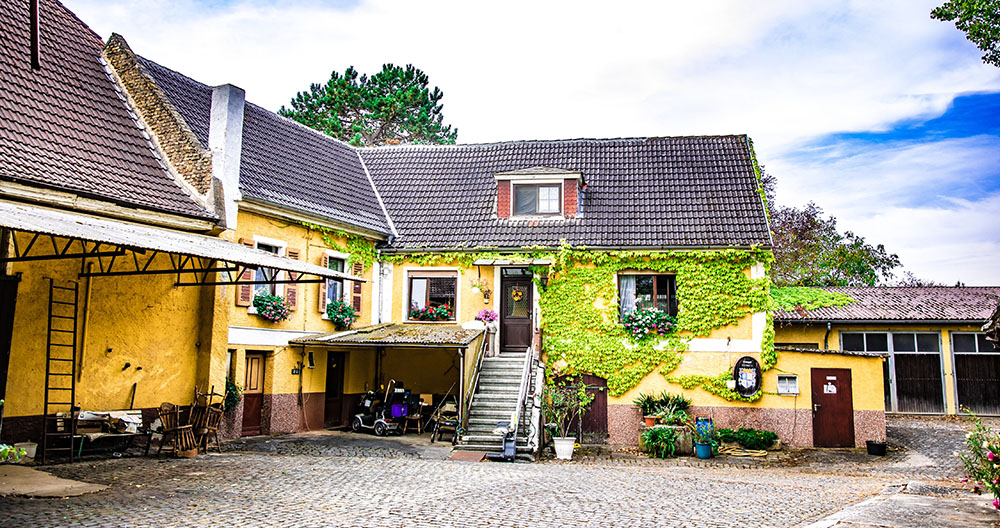
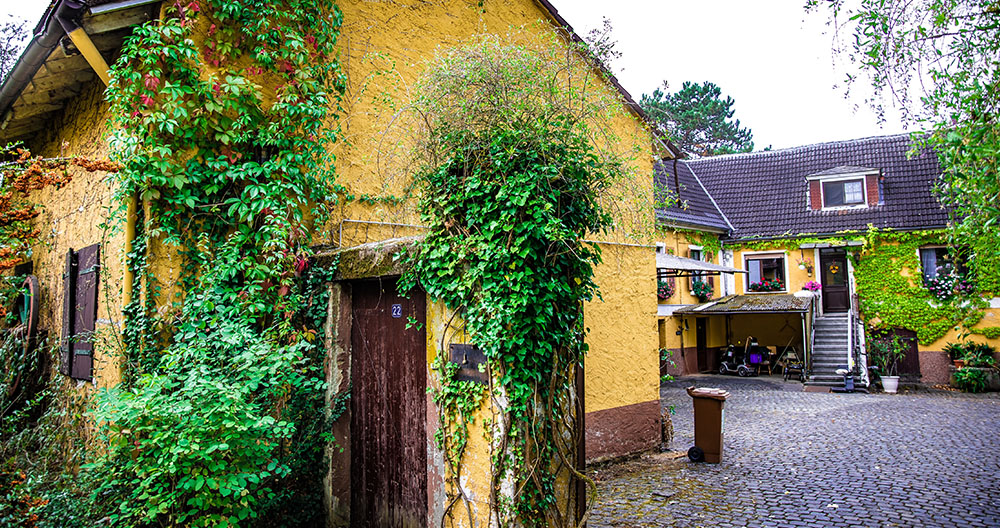
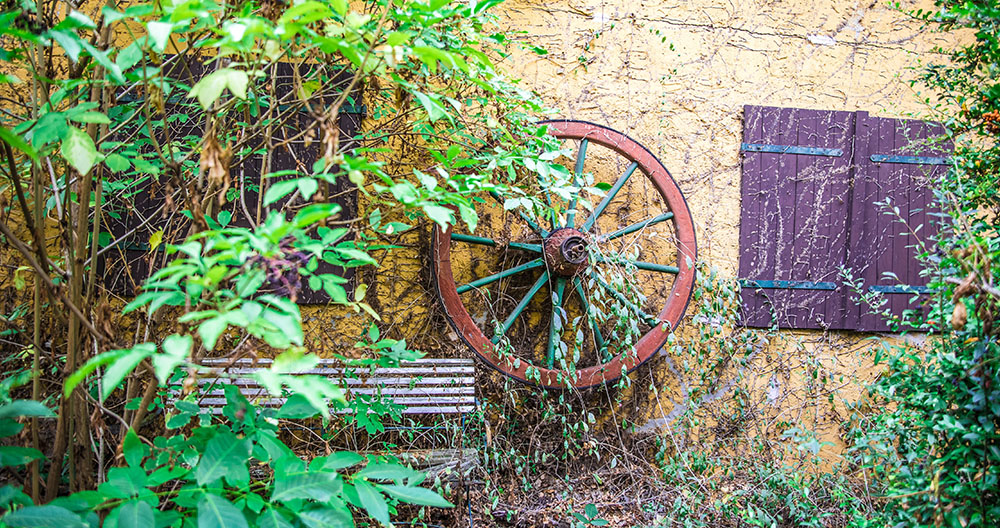
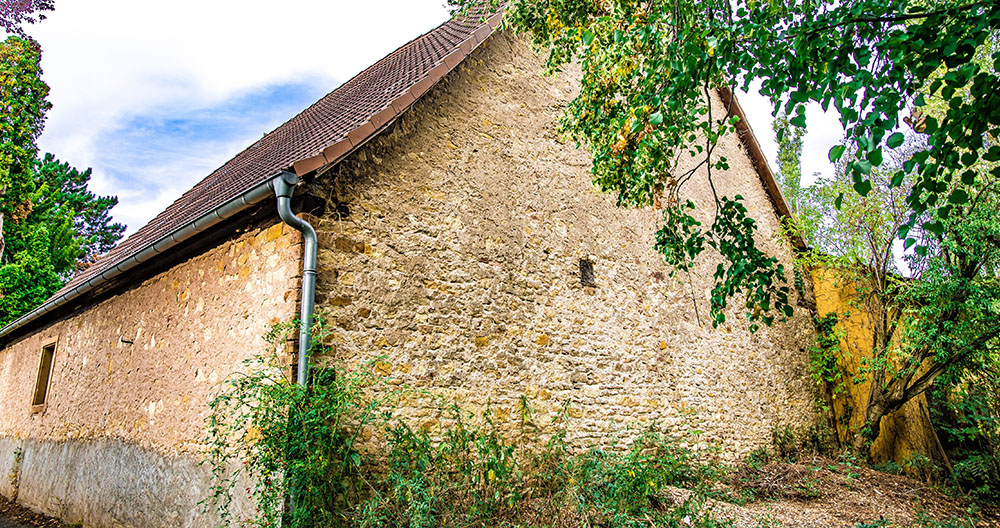
Can you imagine what it was like here 500 years ago? In the year 1474?
Well back then, the whole area here was marsh or “reed-land”. So, no paved roads, no cars, no streetlights. Nothing but a marshland with heavy, wet soil, and reeds that swayed gently in the wind – well and probably a loads mosquitoes.
Then already there was a watermill here. Namely the “Riedmühle”, the Reedmill, which was first mentioned in a document as early as 1474. The Reedmill was one of Nierstein’s three mills along the Flügelsbach-Brook. The brook can still be found right across the street. The Oberdorfstraße – the main street through the old town center – was original built parallel to brook. This can still be recognized today by the street’s mild curves. As already mentioned there were two more mills at the Flügelsbach brook: the Kreuzmühle and the Rheingässer Mühle. There were also three ship-mills on the Rhine.
The mills were rather important because they provided the flour that the people of Nierstein needed to bake their bread. So did the Reedmill! The mill wheel in the brook drove the grinding stones in the grinding chamber – and the diligent miller toiled, dragged sacks, shoveled grain and flour and kept everything going. Even if the mill was not his. He was just the tenant. Like almost everything in Nierstein, the nobility owned the mill. Originally, it belonged to the Lords of Heusenstamm, then in 1632 to the Mosbach von Lindenfels familiy, who also owned the Geismarer Hof in the Oberdorfstrasse, and in the 18th century, it belonged to the Barons von Rollingen and the Count von der Leyen, who also owned the moated castle that was once situated in the Oberdorfstrasse.
However, just like the nobility, the millers apparently liked to stay among themselves: The grandson of the Riedmühle’s miller married the daughter of the of the Kreuzmühle’s miller. And their mother, in turn, came from the Froschmühle in Schwabsburg. By the way, relatives of their families emigrated to Richfield in Wisconsin, so that people in distant America also knew about the mills at Nierstein’s Flügelsbach – even if the mill wheels have been standing still for a long time now…
Would you like to find out more about Nierstein’s history? Then why not take one of our audio-guided tours! They start at the market square and at the town hall.





Can you imagine what it was like here 500 years ago? In the year 1474?
Well back then, the whole area here was marsh or “reed-land”. So, no paved roads, no cars, no streetlights. Nothing but a marshland with heavy, wet soil, and reeds that swayed gently in the wind – well and probably a loads mosquitoes.
Then already there was a watermill here. Namely the “Riedmühle”, the Reedmill, which was first mentioned in a document as early as 1474. The Reedmill was one of Nierstein’s three mills along the Flügelsbach-Brook. The brook can still be found right across the street. The Oberdorfstraße – the main street through the old town center – was original built parallel to brook. This can still be recognized today by the street’s mild curves. As already mentioned there were two more mills at the Flügelsbach brook: the Kreuzmühle and the Rheingässer Mühle. There were also three ship-mills on the Rhine.
The mills were rather important because they provided the flour that the people of Nierstein needed to bake their bread. So did the Reedmill! The mill wheel in the brook drove the grinding stones in the grinding chamber – and the diligent miller toiled, dragged sacks, shoveled grain and flour and kept everything going. Even if the mill was not his. He was just the tenant. Like almost everything in Nierstein, the nobility owned the mill. Originally, it belonged to the Lords of Heusenstamm, then in 1632 to the Mosbach von Lindenfels familiy, who also owned the Geismarer Hof in the Oberdorfstrasse, and in the 18th century, it belonged to the Barons von Rollingen and the Count von der Leyen, who also owned the moated castle that was once situated in the Oberdorfstrasse.
However, just like the nobility, the millers apparently liked to stay among themselves: The grandson of the Riedmühle’s miller married the daughter of the of the Kreuzmühle’s miller. And their mother, in turn, came from the Froschmühle in Schwabsburg. By the way, relatives of their families emigrated to Richfield in Wisconsin, so that people in distant America also knew about the mills at Nierstein’s Flügelsbach – even if the mill wheels have been standing still for a long time now…
Would you like to find out more about Nierstein’s history? Then why not take one of our audio-guided tours! They start at the market square and at the town hall.


